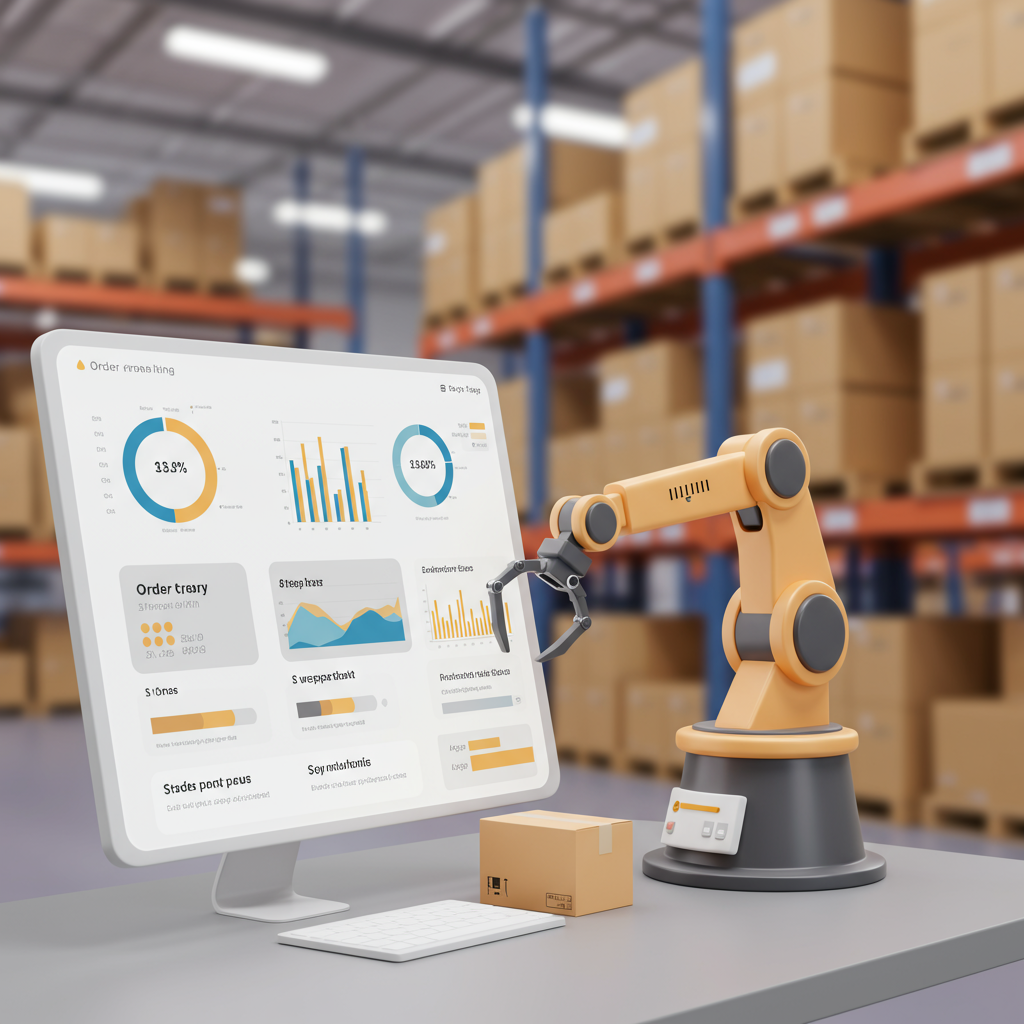Discover how I transformed my e-commerce business by automating the entire order fulfillment process, saving time, reducing errors, and boosting customer satisfaction.
As a Shopify merchant, I know firsthand the thrill of a new order. But that excitement can quickly turn into overwhelm when orders start piling up. Manually processing each one, updating inventory, printing labels, and arranging shipping can consume hours, pulling you away from strategic growth.
This is where fulfillment automation steps in. It’s not just a buzzword; it’s a game-changer for any e-commerce business looking to scale efficiently. I’ve seen its transformative power, and I want to share how you can harness it for your own Shopify store.
At its core, fulfillment automation involves using technology to streamline and execute tasks related to getting a product from your warehouse (or supplier) to your customer’s doorstep, with minimal human intervention.
It covers everything from the moment an order is placed to the final delivery confirmation. Think of it as building a well-oiled machine that handles the repetitive, time-consuming aspects of your operations.
The most immediate benefit I noticed was the significant time savings. No more late nights manually updating spreadsheets or chasing down tracking numbers. This freed me up to focus on marketing, product development, and customer service.
Secondly, automation drastically reduces human error. Typos in addresses, incorrect product counts, or forgotten shipping notifications become a thing of the past. This leads to fewer returns, fewer customer complaints, and a much smoother operation.
Improved customer satisfaction is another huge win. Customers today expect fast, accurate, and transparent shipping. Automated systems ensure orders are processed quickly, tracking information is sent promptly, and communication is consistent.
Scalability is perhaps the most crucial long-term benefit. As your business grows, manual processes simply won’t keep up. Automation allows you to handle a higher volume of orders without needing to exponentially increase your operational staff.
Finally, cost reduction. While there might be an initial investment in tools or services, the long-term savings from reduced labor costs, fewer errors, and optimized shipping rates often outweigh the upfront expense.
Let’s break down where you can apply automation within your Shopify ecosystem.
This is the first step. Automation here means that once an order is placed and payment is confirmed, the system automatically marks it as paid, updates inventory, and can even trigger the next steps like sending it to a fulfillment center or generating a packing slip.
Shopify’s native capabilities allow for some basic automation, like automatically marking orders as fulfilled once tracking is added. However, for more complex workflows, you’ll need apps.
Keeping track of stock levels is critical. Automated inventory systems can update stock in real-time across all sales channels, send low-stock alerts, and even automatically reorder products from suppliers when thresholds are met.
This prevents overselling and ensures you always have popular items in stock, which I’ve found to be a huge relief.
This is often the most time-consuming part. Automation here involves automatically selecting the best shipping rate, generating shipping labels, and even scheduling pickups with carriers.
Many Shopify apps integrate directly with major carriers, allowing you to print labels in bulk and automatically update order statuses with tracking information.
Keeping customers informed is vital. Automated emails for order confirmation, shipping updates, delivery notifications, and even post-purchase follow-ups (like review requests) significantly enhance the customer experience.
Shopify’s built-in email notifications are a good start, but apps can provide more sophisticated, personalized, and triggered communication flows.
For Shopify Plus merchants, Flow is an incredibly powerful native tool. It allows you to create custom workflows based on triggers and actions. For example, ‘When order value > $X, tag as VIP and send to specific fulfillment team.’
The Shopify App Store is brimming with solutions. Look for apps specializing in order management, shipping, inventory, and marketing automation. Popular choices include ShipStation, ShippingEasy, Stocky (Shopify’s own inventory app), and various email marketing platforms.
For many merchants, especially as they grow, outsourcing fulfillment to a 3PL is the ultimate automation. You send your inventory to them, and they handle storage, picking, packing, and shipping.
Integrating a 3PL with your Shopify store means orders are automatically sent to them, and they handle the rest, updating your store with tracking information. This has been a game-changer for my own scalability.
Don’t try to automate everything at once. Identify your biggest pain points first. Is it manual label printing? Or constantly checking inventory?
Before investing in an app or 3PL, read reviews, compare features, and consider your budget. Many offer free trials, which I highly recommend.
Once you set up an automation, run test orders. Ensure everything is working as expected, from inventory updates to email notifications.
Automation isn’t a set-it-and-forget-it solution. Regularly review your processes. Are there bottlenecks? Can you further optimize?
Sometimes apps don’t talk perfectly to each other. I’ve found that choosing apps designed to work well within the Shopify ecosystem, or those with robust API documentation, helps immensely. Don’t hesitate to contact app support.
It’s possible to automate too much, losing the personal touch. I always ensure critical customer interactions, like complex support queries, remain human-led.
Automation tools can add up. I view them as an investment that pays for itself in time saved and errors avoided. Prioritize tools that address your most pressing needs first.
What do you think about this article? I’m always curious to hear other merchants’ perspectives on these topics.
Embracing fulfillment automation isn’t just about making your life easier today; it’s about future-proofing your business. It allows you to focus on what truly matters: growing your brand, connecting with your customers, and developing amazing products.
I genuinely believe that any Shopify merchant, regardless of size, can benefit from implementing some level of automation. It transforms your operations from a reactive scramble to a proactive, efficient system.
So, take the leap. Start exploring the possibilities. Your future self, and your customers, will thank you for it.






